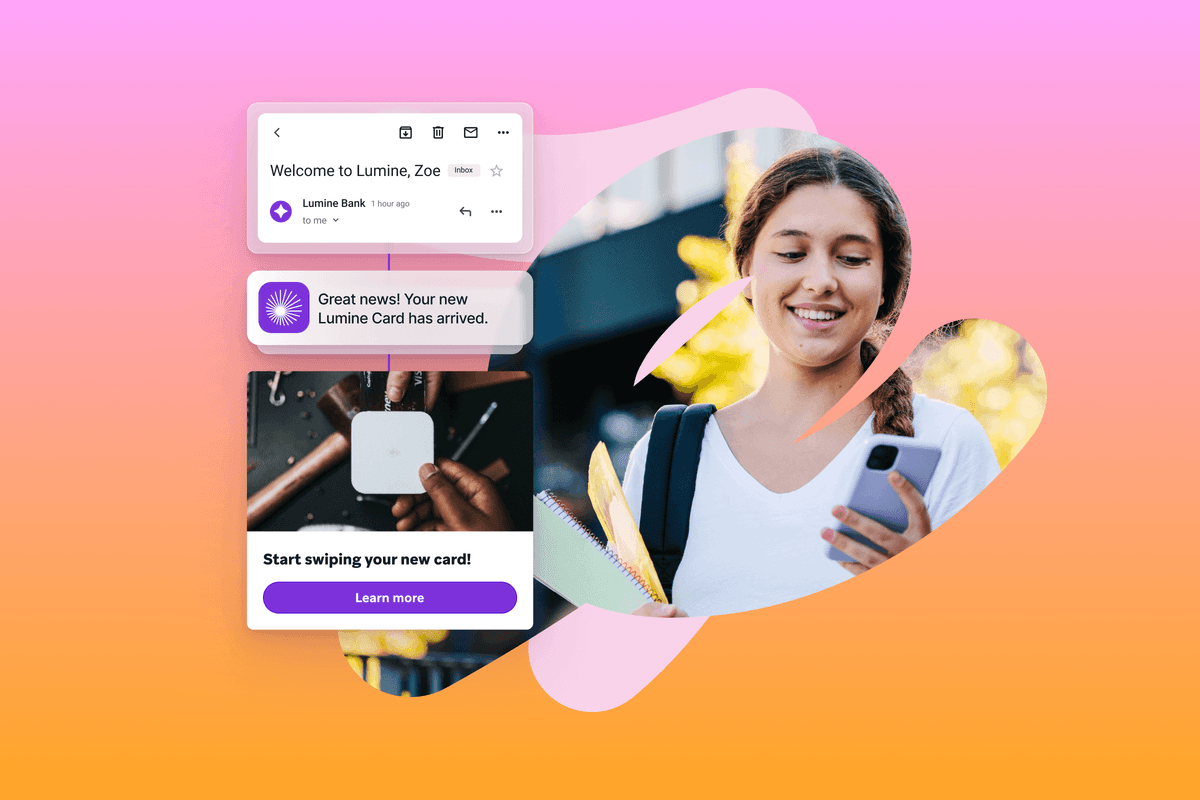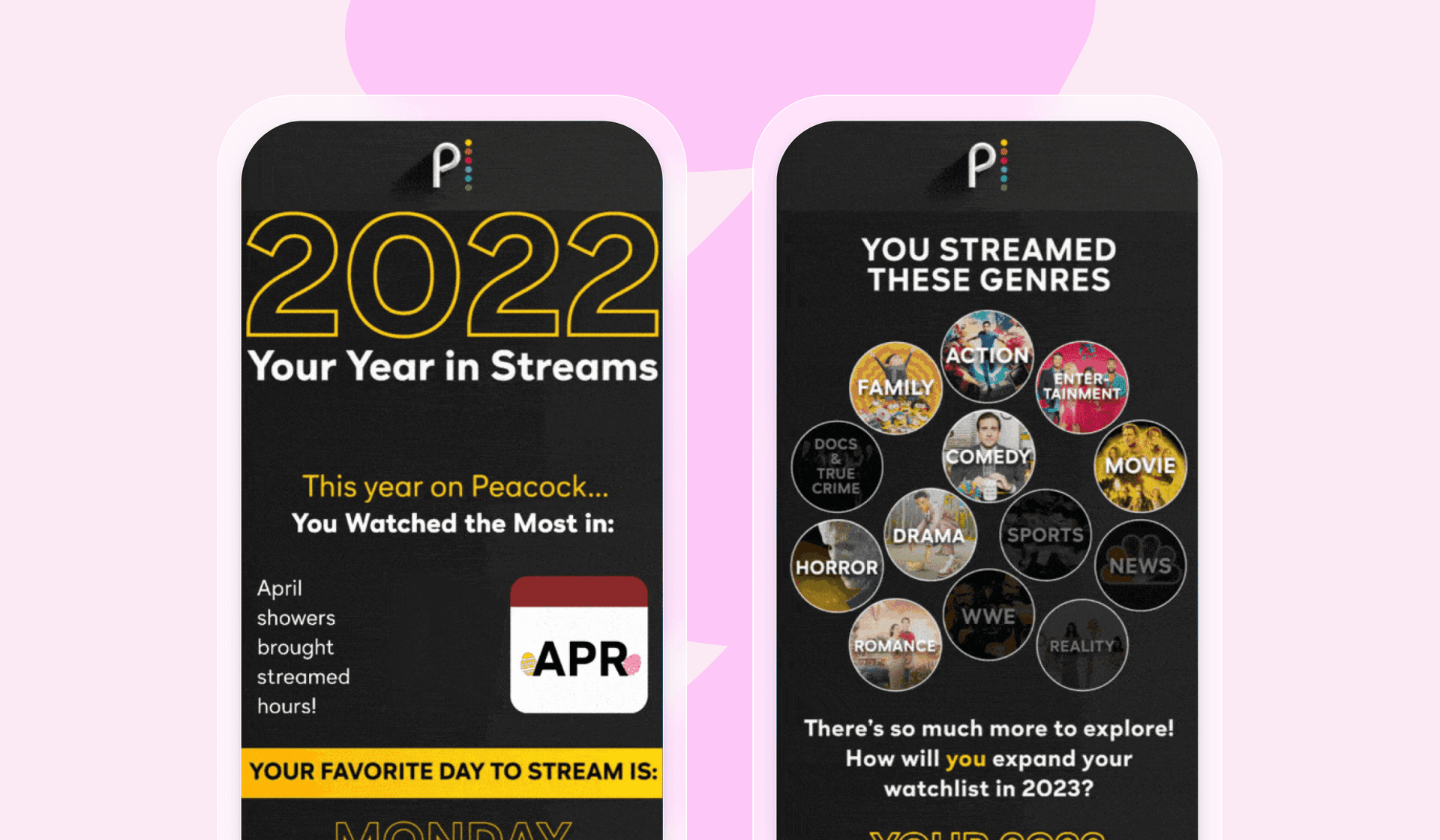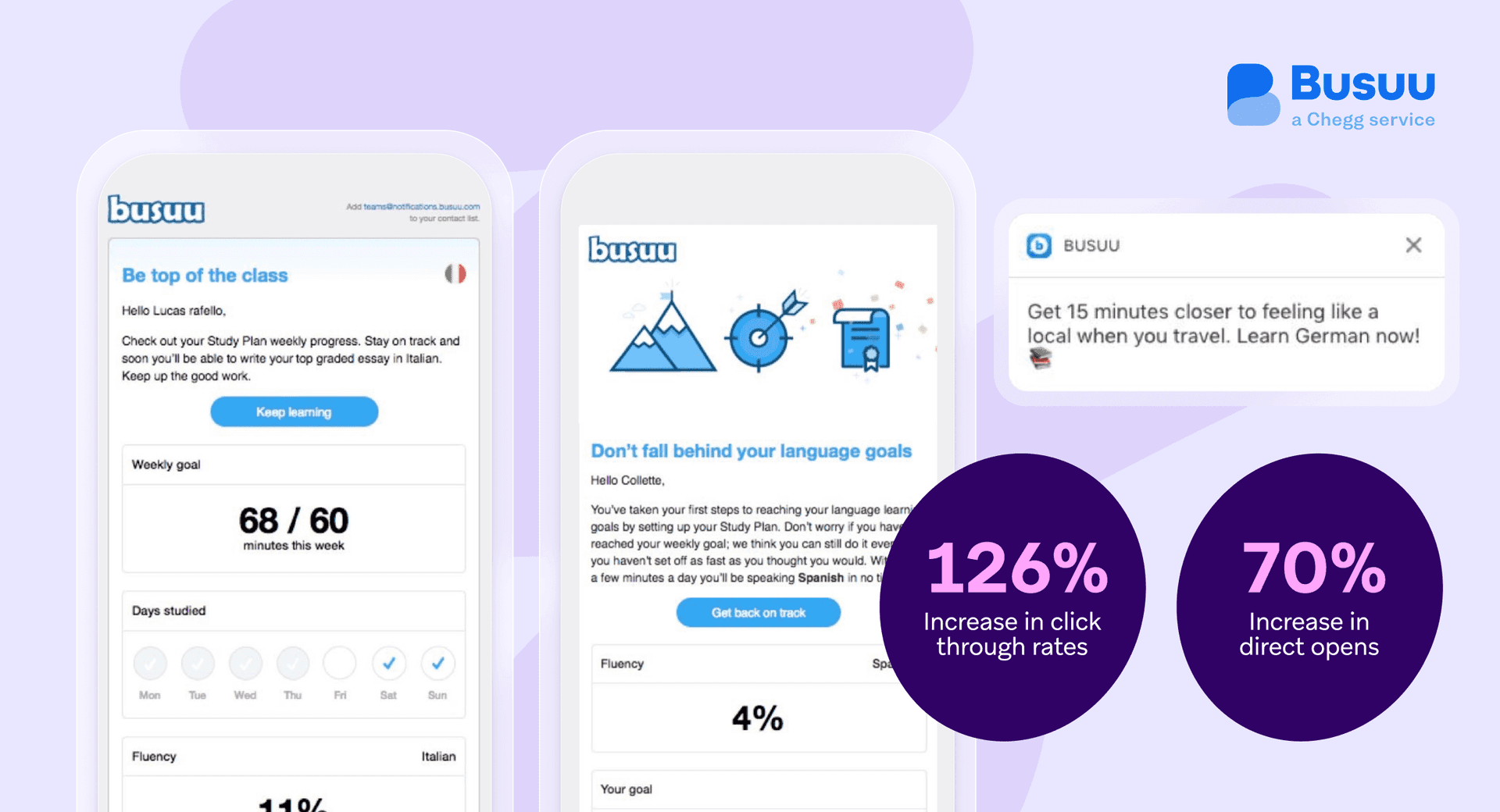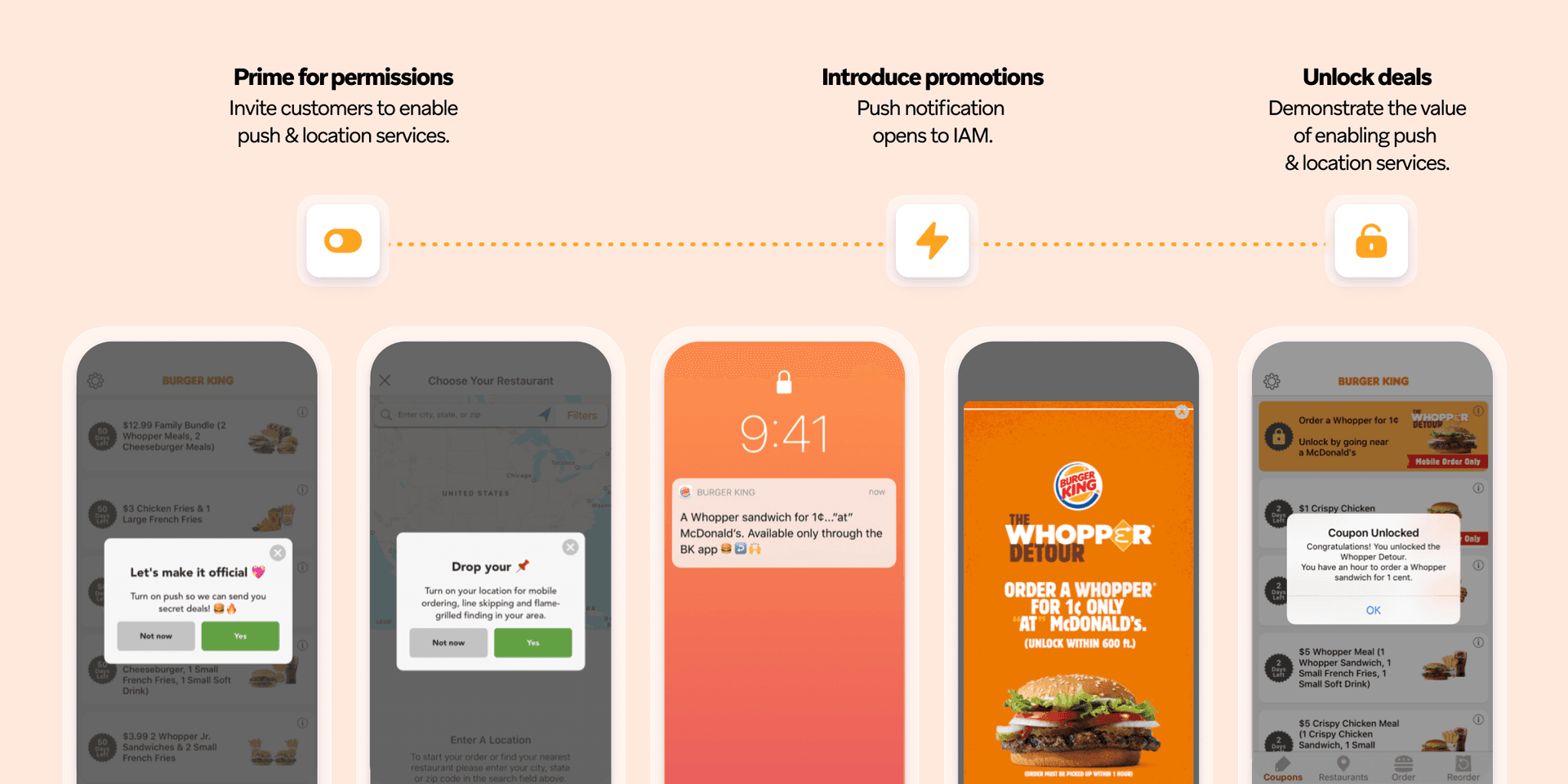Broken vs. Brilliant: Transforming the Digital Customer Experience
Published on September 27, 2024/Last edited on September 27, 2024/16 min read

Published on September 27, 2024/Last edited on September 27, 2024/16 min read


Technology has made it possible for brands to speak with a consistent voice and provide a valuable, coherent, brand experience across a diverse array of digital touchpoints—and that’s led customers to expect this kind of consistency from the companies they engage with. But, too often, there’s a missing link, breaking the connection between these key aspects of a successful marketing campaign and providing customers with a broken, frustrating brand experience. That’s a major problem, especially in today’s increasingly cross-channel, cross-platform, cross-device world.
Getting engagement right doesn’t just happen. To send even the simplest marketing campaign, you need four things:
Many brands make the customer experience work with flare and style, but some fall short on the experiences they’re trying to deliver. To dig into what’s possible when a brand successfully marries data, technology, and people to create consistent, powerful experiences, let’s explore the line between a broken and brilliant brand experience with a little help from a fictional brand, UponVoyage, and one of its (also fictional) customers, Sara Hightower-Kellerman.
Meet Sara Hightower-Kellerman. She’s a software engineer at an Austin-based startup, and when this year’s edition of World On-Demand Week (WOW) rolls around, she finds herself dependent on travel and hospitality app UponVoyage to get her to Kansas City and back. But what that experience feels like depends heavily on factors beyond her control. Namely, has UponVoyage provided a cohesive cross-channel, cross-platform brand experience? Watch the video to find out.
A compelling onboarding experience makes it possible to start your relationship with each customer on solid footing. Yet, making it work takes the right customer engagement strategy, connected systems, and especially smart collaboration. If your mobile, web, marketing, and UI/UX teams only see each other at happy hour, a great experience is a tough thing to deliver consistently. Getting this balance right isn’t easy, and that’s reflected in the numbers: fewer than 25% of people who download an app will return to it the next day.
But here’s the thing: it’s entirely possible to provide every customer with the sort of thoughtful, relevant experience that drives real loyalty—and to do it right from the start.
Let’s imagine an alternate version of how Sara Hightower-Kellerman experienced downloading and using UponVoyage for her upcoming work trip. This time, Sara is successfully activated. She’s able to easily add her existing travel reservations, opt into receiving updates related to her trip, and share her location so she can navigate more easily during her travels.
What does it take to make your onboarding experience shine? It’s all about preparation, teamwork, and the right tools. This particular brilliant flow leverages:
In today’s fast-moving, digital-first world, marketing thought leaders often talk about the importance of making a strong first impression. Things like priming for push, priming for location, investing in onboarding, and using testing to get your onboarding flow just right. If you don’t win customers early, it becomes a lot harder to retain them. It also takes more than making a good first impression; just like any relationship, customers need to feel nurtured and cared for along the way.
As the customer relationship matures, flash matters less than substance. In general, customers use your service because it’s relevant to their interests and needs, and because your brand adds real value to their lives. Post-onboarding, the onus is on you to live up to customer expectations.
So what does it look like when a brand does that—or fails to? (Like, really, really fails to.)
Let’s look at another Broken Vs. Brilliant experience with Sara as she uses the UponVoyage app to travel to WOW. Her poor onboarding experience has follow-on effects as she misses important updates and notifications from UponVoyage.
When we think of bad customer experiences, we tend to focus on situations where something serious went wrong. That’s natural: There’s little that alienates a customer faster than a brand experience that falls completely on its face. Yet smaller misses also have a cumulative effect and you can easily miss opportunities to provide value.
Here in this alternate reality where Sara travels with a well-designed digital user experience from UponVoyage, she’s able to check in for her flight, select her seat, preload in-flight entertainment, order car service to and from her departure and arrival airports, check in to her hotel, and receive a movie voucher to use at a theater near her accommodations—all seamlessly within the app.
Sara loves the experience because it's easy. She may not even think about it in the moment, but later she’s likely to recommend the app to friends and colleagues. Strong brand/customer relationships are built on clear, meaningful communication—the same as any other relationship! But more communication doesn’t necessarily equal better communication; it’s all about ensuring that your outreach is relevant and valuable. This brilliant flow was accomplished with the following features:
When it comes to customer engagement, many brands miss the full picture. Too many companies go all in on customer acquisition without a clear plan for how to retain new users. Even when brands do prioritize the user experience after that first session or web visit, there’s a tendency to focus on lapsing users and re-engagement. Both these efforts are key parts of a thoughtful, full-lifecycle customer engagement strategy, but marketing, growth, and engagement teams create a lot of unnecessary work when emphasizing acquisition and re-engagement without taking a close look at the middle leg of that journey: the actual day-to-day experience of active customers.
Once a given user is engaged with your app or website, the experience you provide becomes the central factor in whether they grow into a deeply loyal customer (and possible brand evangelist) or slowly drift away. Having a great in-app or website experience is essential, and making that experience all it can be doesn’t just fall on your engineering or web teams. Customer outreach plays a key role in educating customers about the experiences that are available.
Let’s return to Sara. Now she’s heading home from WOW and needs an earlier flight departure. Yet she misses an important update from UponVoyage and arrives late for her flight, has issues checking in for her next flight, and receives an inaccurate update about her gate change, causing her to miss the flight (not to mention the free drink she was offered).
When the customer experience goes bad, it can go really bad. Especially from the customer perspective—often, they’re wasting both time and money. Any interaction that leaves customers feeling unappreciated, neglected, or even insulted are opportunities for competitors. No company strives for that, but avoiding these situations takes more than employing talented people with good intentions. You can write the greatest push notification ever, but if it’s pulling in outdated information or contains contradicting updates, it’s only going to make things worse. To stay out of this danger zone, you need to take a thoughtful, coordinated approach that reduces silos within your company, whether organizational or regarding the flow of data between systems.
When a brand experience works, it’s magical. But because so much of the coordination and moving parts operate behind the scenes, the experience that customers receive is usually defined by its smooth, effective simplicity. That’s okay. The point isn’t to wow your audience with all the work you're doing or the cool technologies you’re leveraging; it’s to make their lives better, their experiences with your brand easier and more valuable, and to set the stage for a long-term, mutually beneficial relationship.
And that’s exactly what happens to Sara during her trip back to Austin with UponVoyage. She checks in, receives an update that lets her know to arrive at the airport early to avoid security delays, requests a car service, preloads her in-flight streaming content, and arranges her ride home within a few simple clicks. Amazing!
This user journey is possible thanks to features like:
The end of a long journey is always a time to pause and take stock, and that’s just as true for any major segment of the customer journey. If you’ve been sending customers regular onboarding communications, or steady messaging around a major promotion or new product feature, that level of outreach isn’t sustainable forever—nor should it be. Each big campaign has its own needs and rules, and part of building a successful customer engagement strategy is determining how to follow up these efforts to strengthen the relationship with your audience and keep the lines of communication open.
To do that, you have to understand how each customer responded to the messages you sent, what channels or message variants or CTAs they engaged with, if any, if they became more active on your app or website—or less. The key is focusing on whether your efforts strengthened or weakened the relationship each customer has with your brand, and finding ways to build on (or address) the impact of this key campaign.
To dig into how to handle this unique-but-essential part of the customer journey, we’ve put together two more Broken Vs. Brilliant videos, where we explore the line between broken and brilliant brand experiences with a little help from the fictional brand UponVoyage. Here the company follows up with customer Sara after her travels.
Customer relationships don’t end when a transaction is complete. Forgetting that can lead to self-defeating moves—like sending promotional messages to customers when they have open customer support tickets. Misses like that can drive users to uninstall your app, switch to the competition, and even badmouth your brand to other consumers. Looking to avoid that? It’s up to you to nurture customer connections with smart messaging and thoughtful use of user data to create the kind of lasting relationships that drive long-term business success.
When things go right, that’s something to celebrate—but it’s no time for marketing, growth, and engagement teams to rest on their laurels. Putting together a post-campaign campaign can be just as involved as creating the original, and should be just as thoughtful. Work through the tools and tactics at your disposal and be mindful of how they will enhance the customer experience.
See an example of this in action, as UponVoyage follows up with Sara after her trip, asking her to rate her experience, encouraging her to opt in for low-price push alerts for her favorite destination, and sending her a price-drop alert for her destination that she acts on to book her next trip via UponVoyage.
This kind of brilliant digital customer experience is possible with:
For effective customer engagement across channels, marketers need a customer engagement platform that can bring together real-time data from multiple sources to orchestrate automated personalized brand experiences that are tailored to individual customers across in-product and out-of-product messaging channels.
Effective customer engagement starts with an effective approach to customer onboarding—getting users to explore your brand’s offerings and interact with your company over time. Use these best practices to maximize the number of users that fully onboard with your website, app, or other digital customer experience.
Using zero-party data and first-party data can help you to better understand who your users are—and what their needs, interests, wants, and behaviors are. At the 1:1 level, brands can create more relevant, meaningful, and personalized brand experiences that drive engagement.
When HBO Max (now Max) used in-app messages to gather customer insights to tailor the user experience, they saw a 15% increase in engagement and churn prevention. Similarly, when Peacock used personalization to deliver custom year-in-review campaigns to customers, they were able to reduce their churn rate by 20%. And, in yet another example, when the webcomic digital publishing platform Tapas used personalization, they saw their new user retention jump by 100%.

Best practices for using push notifications effectively include:
Dynamic content, enabled by tools like Braze Connected Content, makes it possible for brands to send customers the most up-to-date information, whether that’s the latest product inventory, news, weather, or updates related to a flight, sporting event, or concert.
Using dynamic content can lead to more effective customer engagement by increasing the relevance of a campaign and driving performance KPIs like click-through rates, opens, and conversions as a result. Braze has found that when brands use tools like dynamic content to personalize messages, conversions can increase by as much as 27% compared to campaigns without any personalization. When the language learning app busuu used Connected Content to tailor campaigns for users, the brand saw click-through rates climb by 126% and direct opens jump by 70%.

Brands looking to re-engage lapsed users should consider sending push notifications to customers who are slipping away. That’s because push is especially powerful when it comes to re-engagement, giving your outreach a second chance to resonate. That said, you can’t send push campaigns to customers who haven’t opted in, so sending cross-channel re-engagement campaigns is another important strategy for getting in front of lapsed users.
Geofencing is a type of location-based marketing that brands can use to send hyper-localized messaging to customers when they enter, leave, or live within a certain physical area. For instance, travel companies may send specific updates when customers arrive at or depart from an airport. Similarly, restaurants, gyms, banks, or other companies with brick-and-mortar locations may deploy notifications when users are within a certain distance of their physical site. When Burger King leveraged geofencing for the brand’s famous “Whopper Detour” campaign, they saw a 53.7% increase in monthly active users and an incredible 37:1 ROI.

Triggered messaging can increase customer engagement by enabling brands to send relevant, personalized outreach right in the moment and in response to a given customer action, such as after they finish watching a streaming series, return a product, submit customer feedback, pay a bill, or log a workout. Triggered messages can be sent across channels and can be used to better onboard, activate, monetize, engage, and retain customers.
Brands can measure and improve customer engagement across the customer journey by monitoring metrics like opens, clicks, and conversions for:
Other ways to evaluate your performance and ensure effective customer engagement include:
Sign up for regular updates from Braze.